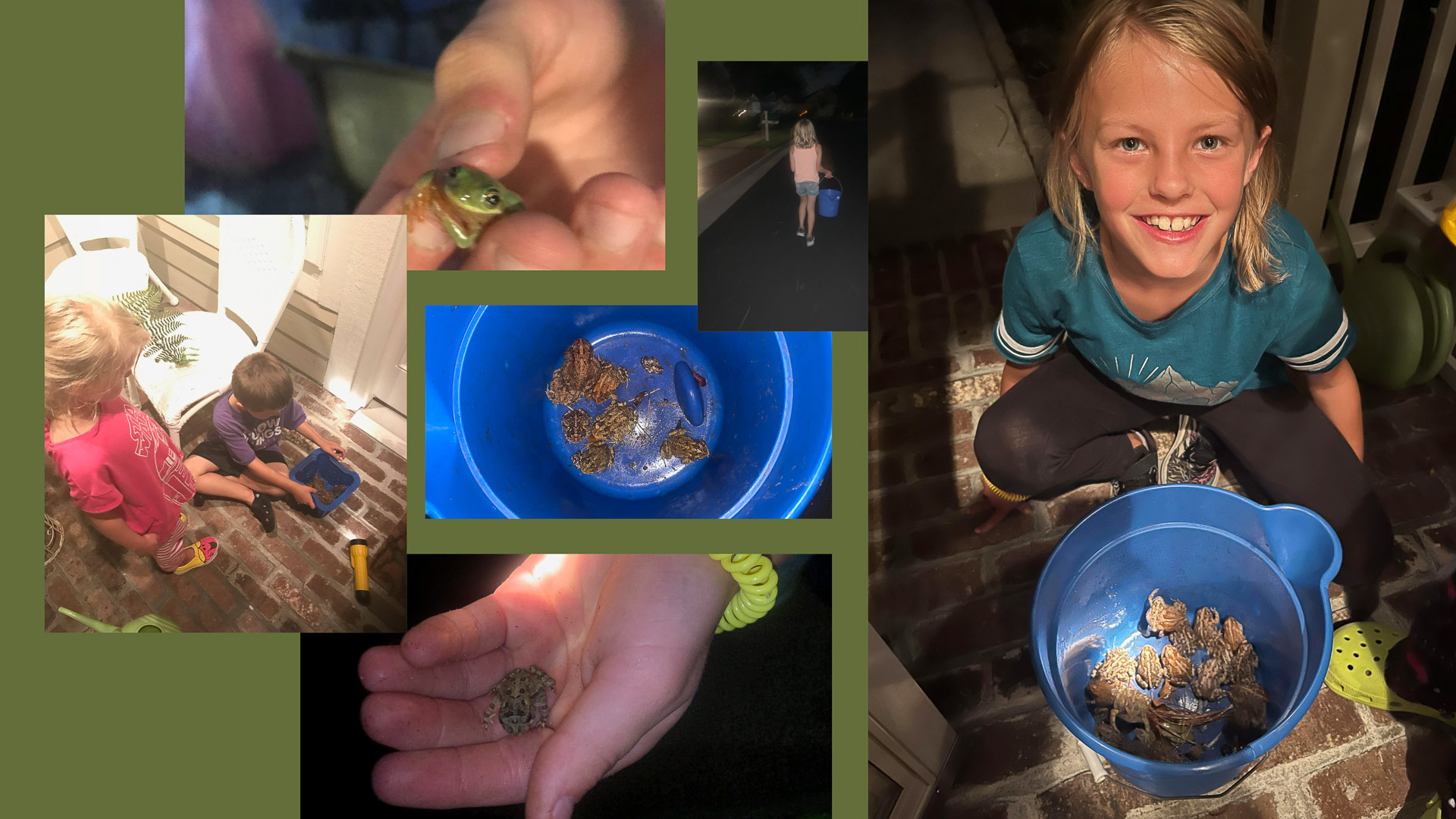
Catching frogs and toads is a simple summer pastime, but it is one that can create so many memories. Heading out on a summer night to hunt for croakers around your neighborhood takes very little in terms of supplies and effort. While toads and frogs are abundant near bodies of water, in humid locations you can easily find them on driveways, near lampposts and even in the tall grass of your backyard. Here are seven tips to find some frogs or toads in your neck of the woods.

Collect Your Supplies
There are very few supplies you need to enjoy this activity, and most of them are common household items. The first thing you will need is a light source. Flashlights are a great tool. A headlamp is ideal if you are hunting alone or want to keep a free hand. Although not necessary, a net can help you scoop any green guys that try to hop away. For little ones, this may help them keep track of their friendly catch. If you plan to collect a bunch, a deep bucket or similar vessel will help you keep track of them until you have time to scare your family with a four-legged friend. After you collect your supplies, be sure to wash your hands to remove lotion, sunblock, etc. Use a nontoxic and fragrance-free soap, if available, to be gentle on any amphibians you catch.

Pick A Location
Toads and frogs are most active at night. They enjoy warm, humid evenings. Head out at dusk into the evening, when bugs are abundant. Your location doesn’t have to be anywhere special. A walk around your neighborhood or even your front or backyard can be successful. Check areas like lampposts where frogs and toads head to catch bugs that are attracted to the light. The bases of objects like pots, mailboxes, trees and even window wells are typical hopper hangouts. Driveways and sidewalks are great spots to scan, as well as areas where leaves are piled up. If you are comfortable, and it’s safe to do so, the edge of a lake or pond is also a good location for hunting.

Keep Your Eyes And Ears Open
Listen for croaks and ribbit noises that fill the air to help locate any toads or frogs. They are most vocal at night, when their common predators are no longer active. Some frogs and toads have deep croaks or grunts, while some let out a squeakier sound. The sounds are often made before or during rain or in the spring during mating season, when they are most vocal. Their sounds will often stop, though, as you approach them. They are also quiet during full moons and often after a rain.
If trying to find a frog or toad with your eyes, scan the ground with a light source and look for the reflection of eyes. Another thing to look for (in case the frog or toad is turned the other way) is the reflection of a shiny bump.

Work As A Team
If you have a few hunters, working as a team will help you collect the most green guys. Take turns scanning the ground or listening for croaks and calls. Have one hunter shine the light as the other one approaches to catch your prey. With two or more hunters, you can approach any toads or frogs from behind for easier catching. Buddying up will make the experience more fun and more successful, too.

Approach Slowly And Scoop Quickly
Frogs and toads have good hearing, making it necessary to approach them slowly and quietly. As you get closer to the toad or frog, keep the light fixed on its eyes. It will freeze in the light. With the light on it, it can’t see you. However, it can still hear anything approaching it, and any noise may still startle it. Frogs and toads can hear vibration. It’s best to approach it from behind (that is why it’s nice to team up) to catch it.
Cup your hands to create a scoop. Bring your hands together to trap it. If you are fast enough, or able to hunt from behind, you can try to grab it above the hind legs. Then, place it in a net or bucket.
If you are using a wide net to catch the toad or frog, drop the net on top of the frog. Make your motion swift, so that it can’t hop away. Keep the net over it for a few minutes to make it easier to handle when removing it from the net.

Handle With Care
Grip it firmly (but not too tightly) around the hips or upper back legs. To keep from harming it, be sure to not squeeze it. If you have little ones, it may be best if you hold the toad or frog to be sure it doesn’t get harmed. While humans have ribs, these little guys do not have anything to really protect their organs.

Let Your Collection Go
Although it may be tempting to want to keep a frog/toad or two, they need to be released back into their natural environment. Be sure to let them go soon after you collect them. Toads already have dry skin, but a frog’s skin needs to stay moist. Handle each little guy with care as you release them back into the wild. It’s best to hold them low to the ground so they don’t fall too far if they leap from your hand. Place them back in the places where you found them. Be sure to wash your hands well after handling any toad or frog.





